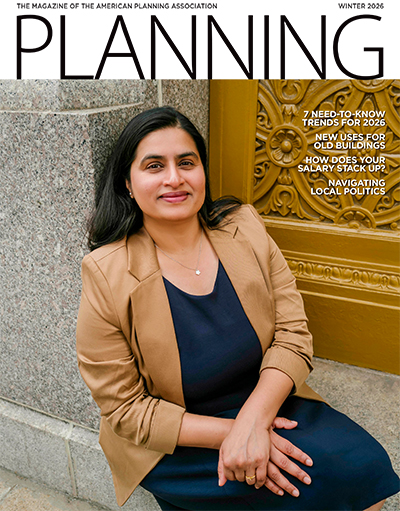Oct. 27, 2022
"Receiving a planning education was one of the best preparations for what I would do," says Henry Cisneros.
That impressive resume includes four terms as the mayor of San Antonio, four years as the secretary of Housing and Urban Development in the Clinton administration, and a variety of high-outcome national and local projects in the years since.
I recently caught up with Cisneros to learn more about his passion for infrastructure, a new effort to create a minority-owned business district in San Antonio, and how his planning education has guided him through every phase of his career. This conversation has been edited for length and clarity.
SAUNDERS: How did your interest in planning come about?
CISNEROS: In 1968, the country seemed to be pulling itself apart. In January, the Tet Offensive showed that the Vietnam War effort was going nowhere. President Lyndon Johnson chose not to pursue re-election. Dr. Martin Luther King, Jr., was assassinated. Senator Bobby Kennedy was assassinated. Cities burned across the country that entire summer. Fall brought a very contentious, very divisive presidential election.
I knew I always wanted to be involved in some kind of public service, possibly internationally. But that period made it clear to me that there was nobility, usefulness, and value in working to create a better United States domestically.
SAUNDERS: Which came first, your interest in politics or planning?
CISNEROS: They came together. When I was 19 or 20, the head of the student union asked me to attend a conference in New York because I was already thinking in the way others were about cities. I had never been there — or even been on a plane. I spent a week with urban leaders who described the work of Mayor John Lindsay and Daniel Patrick Moynihan; he called himself an urbanist, a term I'd never heard before. He was on the front page of Time talking about the urban crisis.
At that moment, I decided to find a degree program, and it was right there on campus at Texas A&M. I immediately changed my major to government and pursued a master's in urban planning. That led to another master's in public administration at Harvard and a doctorate in public administration from George Washington University, with an urban administration and urban finance emphasis. Receiving a planning education was one of the best preparations for what I would do.
SAUNDERS: Planning can involve a wide range of subdisciplines: land use policy, housing, infrastructure, development review, to name a few. Which intersected most with your political roles?
CISNEROS: As mayor in 1983, I established something called Target '90 in San Antonio. We wanted to speak to the city about its future in 12 different areas: transportation, infrastructure, international trade, downtown development, economic development, and much more. We engaged the community and set goals that we could reach by the year 1990.
Later, when I was asked by President Bill Clinton to become the Secretary of Housing and Urban Development, housing became a particular focus, especially workforce housing. I ended up creating a company whose goal was to develop workforce housing.
I also developed a deep interest in infrastructure. During my tenure as mayor, we expanded the airport, doubled the size of the convention center, built a 65,000-seat domed stadium, and improved the San Antonio River. I fell in love with the infrastructure aspect of public life, and that's defined the last two decades for me.
SAUNDERS: Can you explain how planning has informed your perspective of the political process?
CISNEROS: The planning background gives you the perspective of future orientation. Planners can bring that perspective to the political process. It also provides a rational basis for explaining the steps of the process, the substance of the position. They become very good political skills. I find the most underutilized skill of political leaders is the willingness to stop and explain, the ability to break things down into their component pieces. Planners are taught to do that.
SAUNDERS: What's been the most pressing issue among your constituents, and how has your planning knowledge informed your response?
CISNEROS: I'm no longer in public life as an elected official, but I still work in the public interest. Since leaving public life, I've had a bifurcated approach to what I do. I've become chairman of an effort to dramatically revitalize San Antonio's West Side. We buy properties and refurbish them and work to attract industries and jobs to the area. We take our inspiration from Tulsa's Black Wall Street, to create a thriving minority-oriented business district. That's what I do at the local level.
I'm also involved with a group working at the national level as chairman of an organization called American Triple I. We work on transportation and other infrastructure projects nationwide. I want to carry forth my commitment to the nation's infrastructure because cities are the engine of the American economy. As goes metropolitan America, so goes the nation. We need to be investing in the mechanisms that allow that economic engine to function.
SAUNDERS: How can planners help elected or appointed officials build understanding and trust in the planning process?
CISNEROS: Planners have to move from the intricacies of the process to the larger vision, then integrate that vision with the goals of political leaders. Planners can build the momentum needed to keep things moving forward and a community's confidence to get things done.




